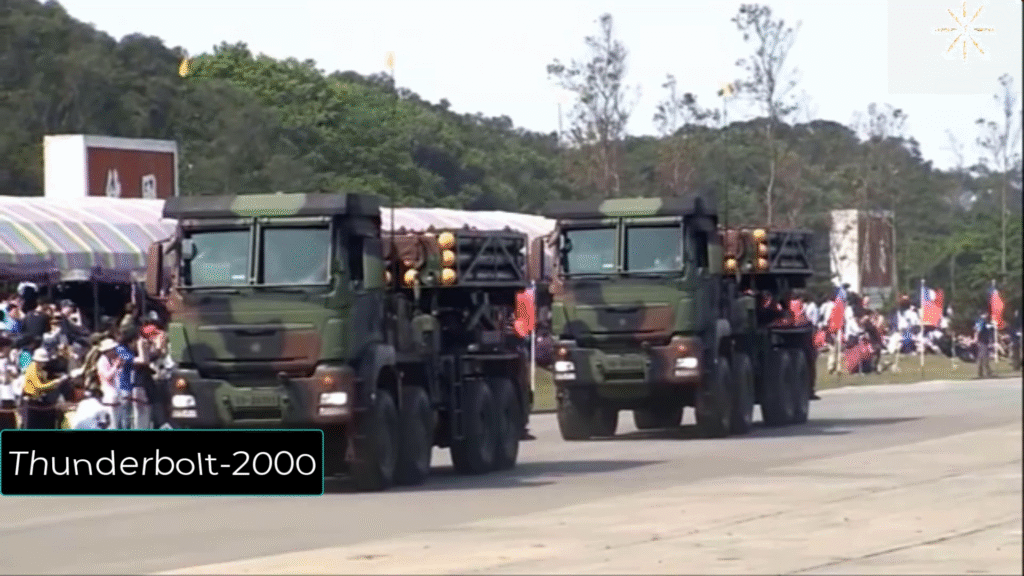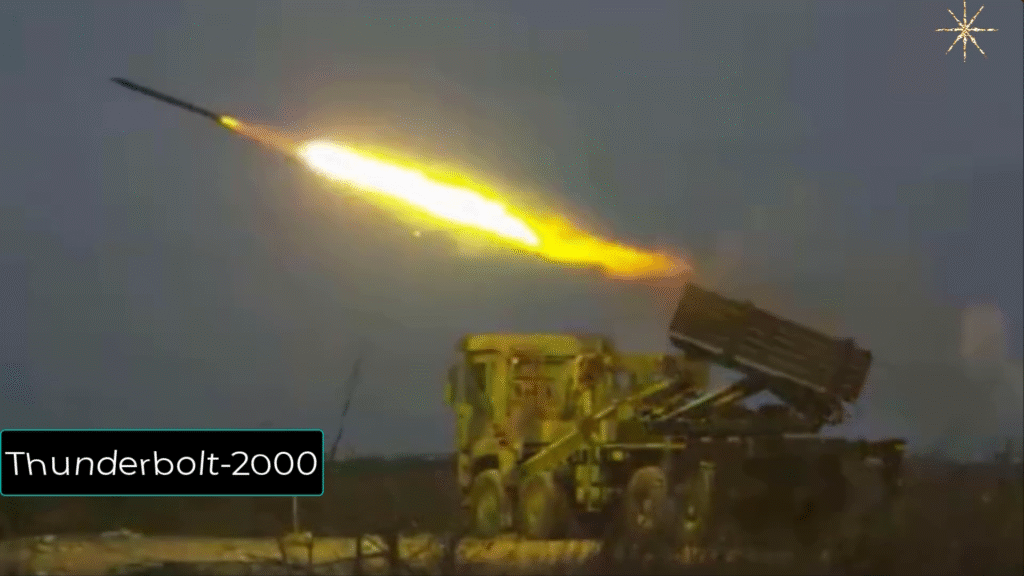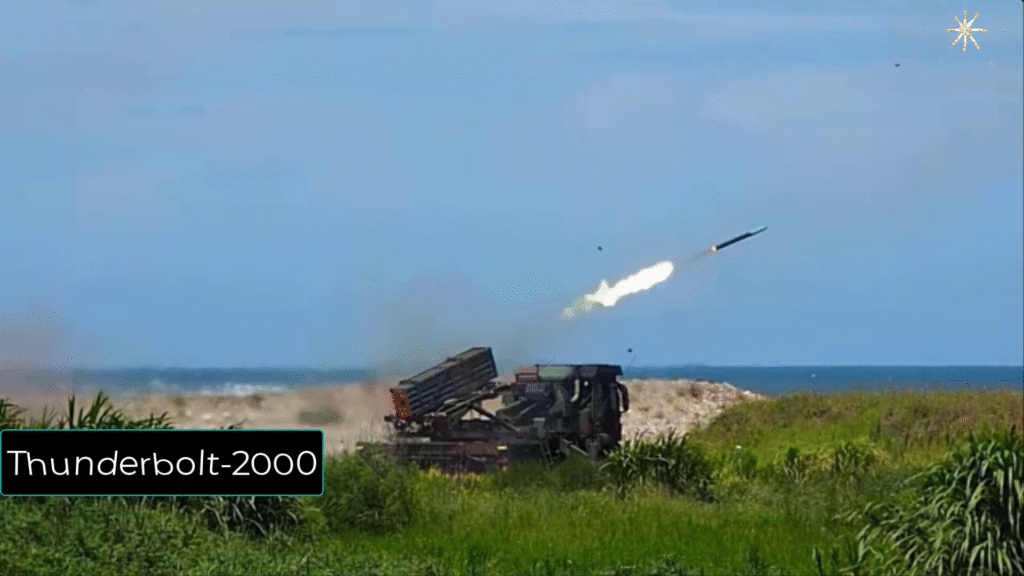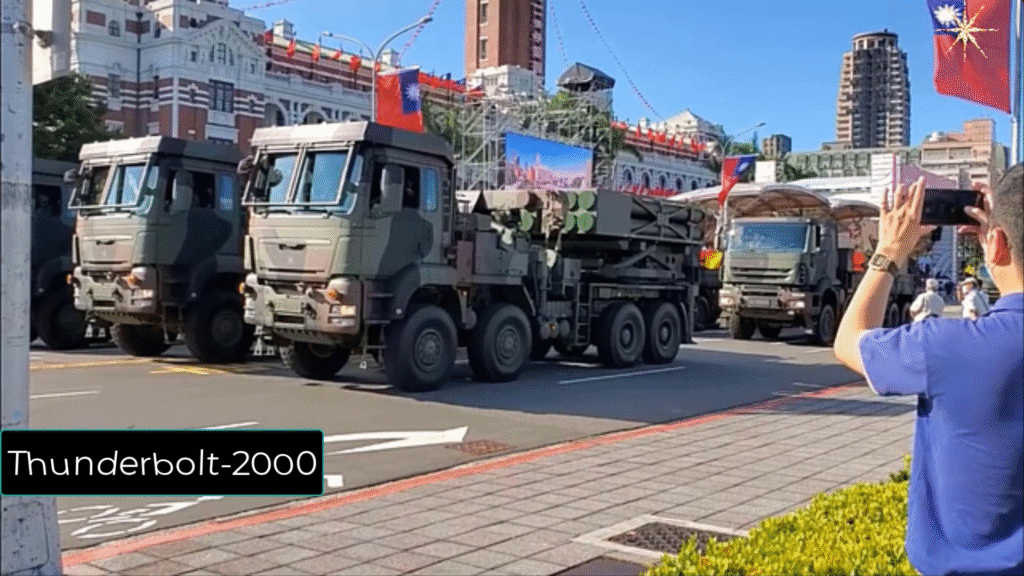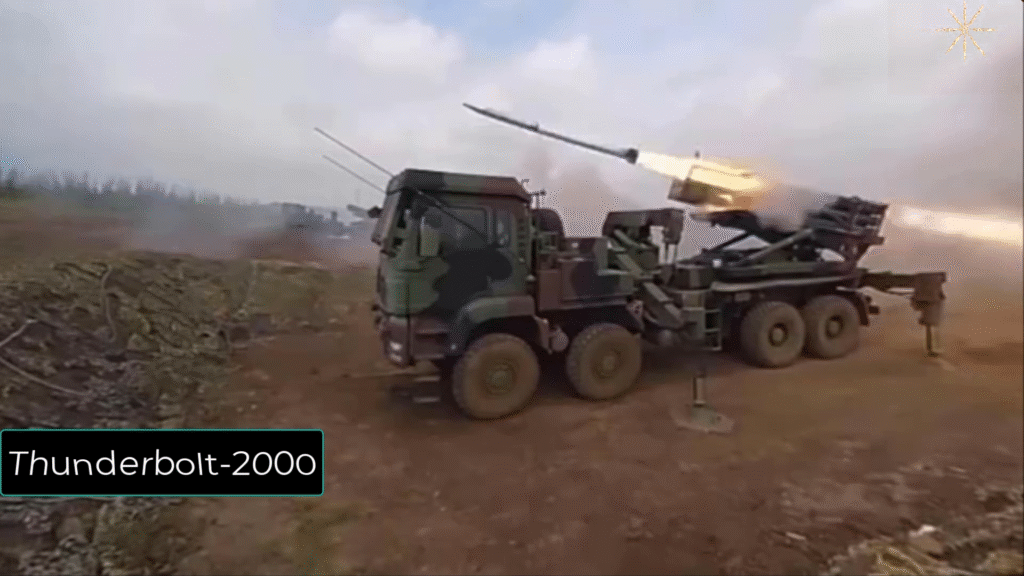
The Thunderbolt-2000: Taiwan’s Mobile Rocket Artillery Powerhouse
The Thunderbolt-2000 is a multiple launch rocket system (MLRS) developed by Taiwan (Republic of China). It was designed to meet Taiwan’s need for a highly mobile artillery rocket system that can quickly deliver a large volume of firepower. In today’s dynamic security environment, this system has become a cornerstone of Taiwan’s defense strategy.

Background and Development of Thunderbolt-2000
The Thunderbolt-2000 was developed by the Chungshan Institute of Science and Technology (CSIST), a premier research and development agency in Taiwan. Development of this advanced artillery system began in the late 1990s. It entered active service around 2002.
Taiwan faced the challenge of countering potential amphibious invasions and large-scale military attacks from China. In response, Taiwan prioritized the creation of a flexible and mobile artillery system that could adapt to different battlefields. As a result, the Thunderbolt-2000 was born, giving Taiwan an edge in maintaining a credible deterrent against possible threats.
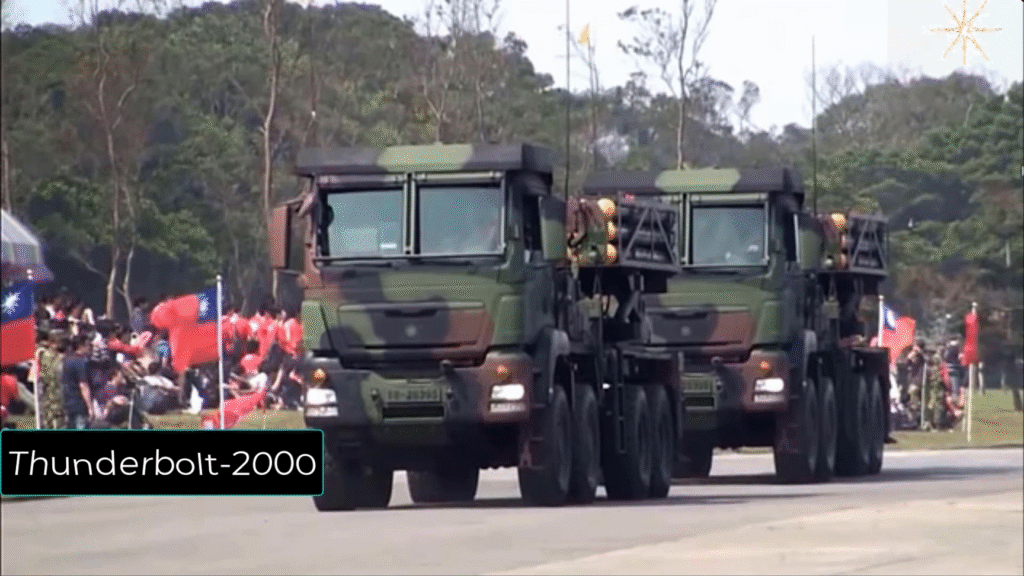
Vehicle Base and Mobility
One of the Thunderbolt-2000’s most impressive features is its mobility. The system is mounted on an 8×8 wheeled truck, based on the German MAN HX81 chassis. This rugged vehicle offers excellent off-road capabilities, allowing the system to operate in various terrains.
The choice of an 8×8 wheeled truck provides superior maneuverability compared to tracked vehicles. In addition, it reduces maintenance costs and increases operational efficiency. Because of its mobility, the Thunderbolt-2000 can be deployed rapidly to where it is needed most, making it a critical asset in Taiwan’s defense network.
Armament and Firepower
A key aspect of the Thunderbolt-2000’s effectiveness is its ability to launch three different types of rockets. Each rocket type serves a unique role on the battlefield, providing flexibility and a tailored approach to fire missions.
✅ 117 mm Rockets
These rockets are used for shorter-range missions, with a range of approximately 15 to 20 km. Their smaller size makes them ideal for engaging nearby targets and providing quick, suppressive fire against advancing forces.
✅ 180 mm Rockets
With a range of around 35 to 45 km, these rockets can strike deeper into enemy positions. They offer a balance between range and payload, making them suitable for targeting command posts, logistics hubs, and concentrations of enemy forces.
✅ 230 mm Rockets
The 230 mm rockets offer the longest reach of the system, with a maximum range of 45 to 60 km. These powerful rockets are designed for precision strikes against high-value targets deep within enemy territory. Their larger warheads can deliver significant damage, making them a formidable tool in Taiwan’s arsenal.
By offering three different calibers of rockets, the Thunderbolt-2000 can adapt to various combat scenarios. Consequently, it ensures Taiwan’s artillery remains versatile and responsive.
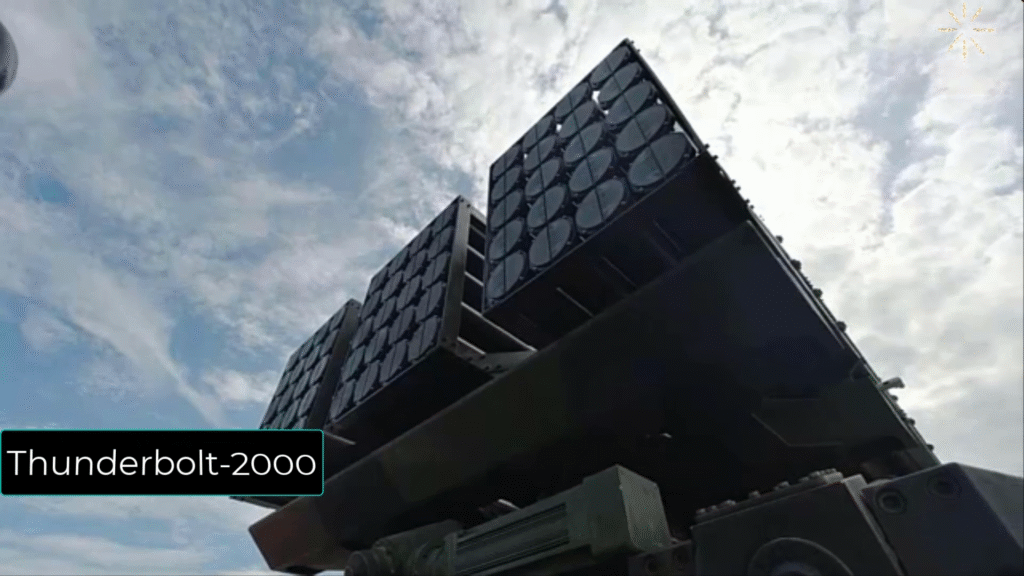
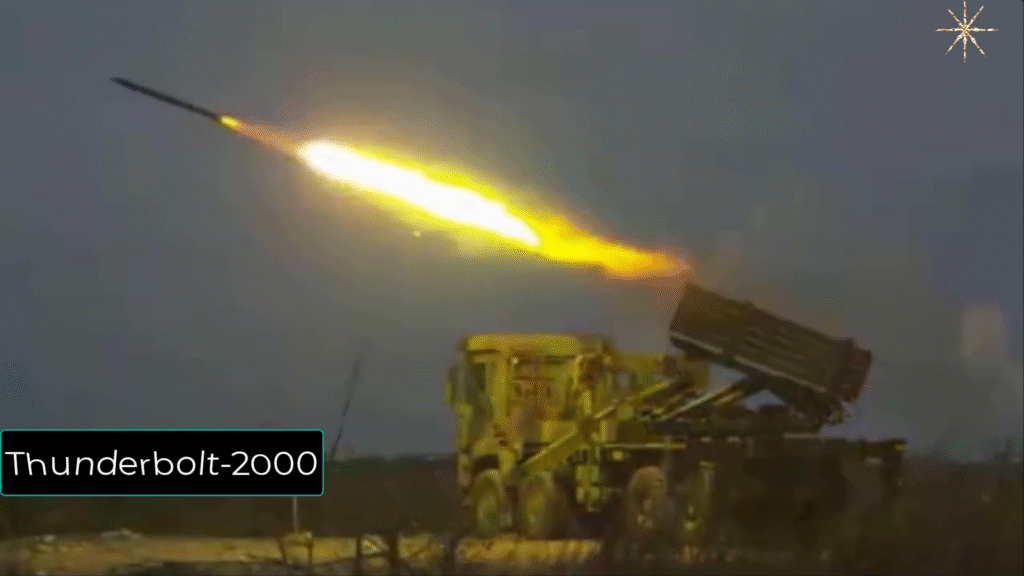
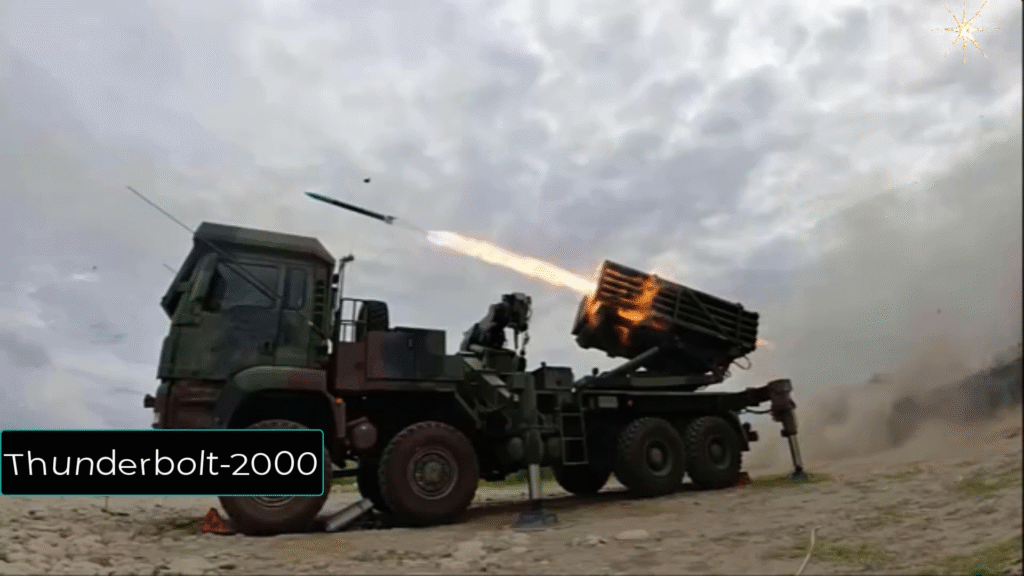

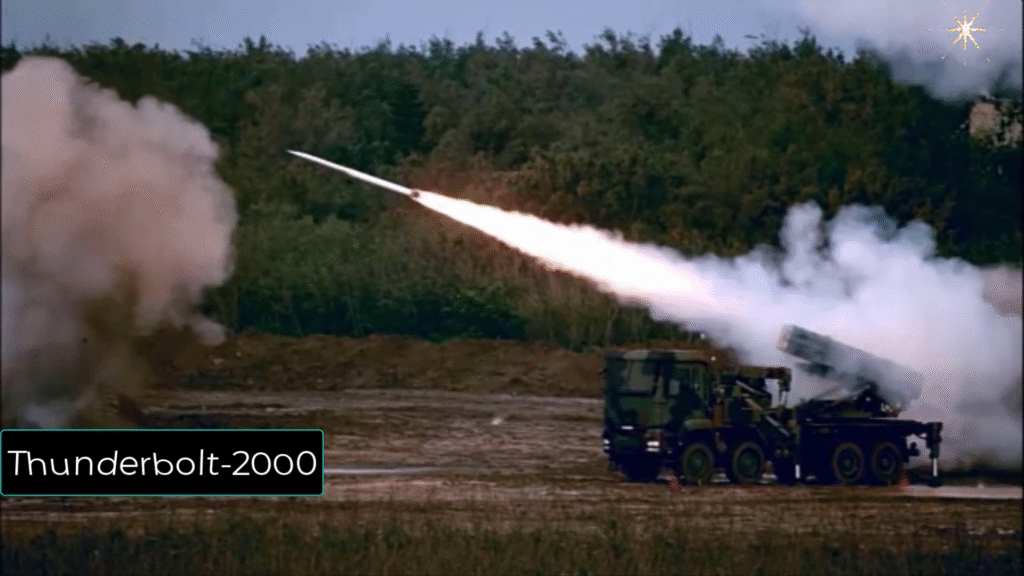
Thunderbolt-2000: Crew and Operation
Typically, the Thunderbolt-2000 is operated by a crew of four to five personnel. Each crew member plays a vital role in ensuring the system functions seamlessly. For example, crew members are responsible for targeting, loading, firing, and maintaining the system.
Although operating a system of this complexity requires training, the Thunderbolt-2000 was designed with user-friendliness in mind. In fact, modern control systems and targeting technology reduce human error and improve accuracy. This makes the system more reliable during combat operations.
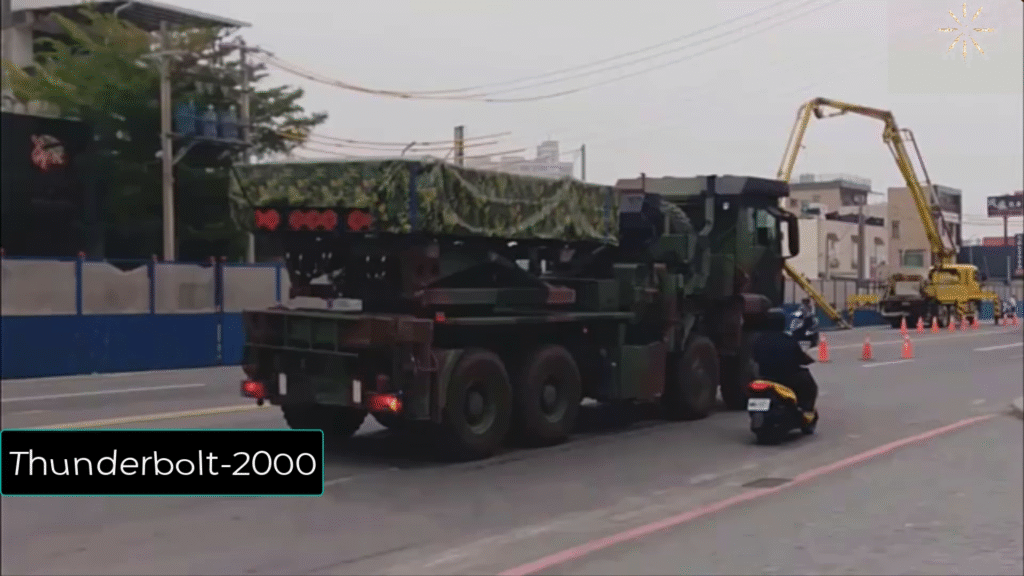
Strategic Role in Taiwan’s Defense
The Thunderbolt-2000 was developed in direct response to evolving threats from China. Taiwan faces the possibility of large-scale amphibious attacks or missile strikes aimed at destabilizing its security. As a result, Taiwan’s military has focused on systems that can provide rapid, overwhelming firepower while remaining mobile and hard to target.
The Thunderbolt-2000 fits this need perfectly. Because of its mobility and firepower, it can be quickly relocated to different positions, making it difficult for enemy forces to target. At the same time, it can deliver devastating barrages of rockets to disrupt enemy operations and slow down or repel invading forces.
Moreover, the Thunderbolt-2000 plays a psychological role in Taiwan’s defense posture. Its presence signals to adversaries that Taiwan can strike back effectively and decisively, deterring potential aggression.
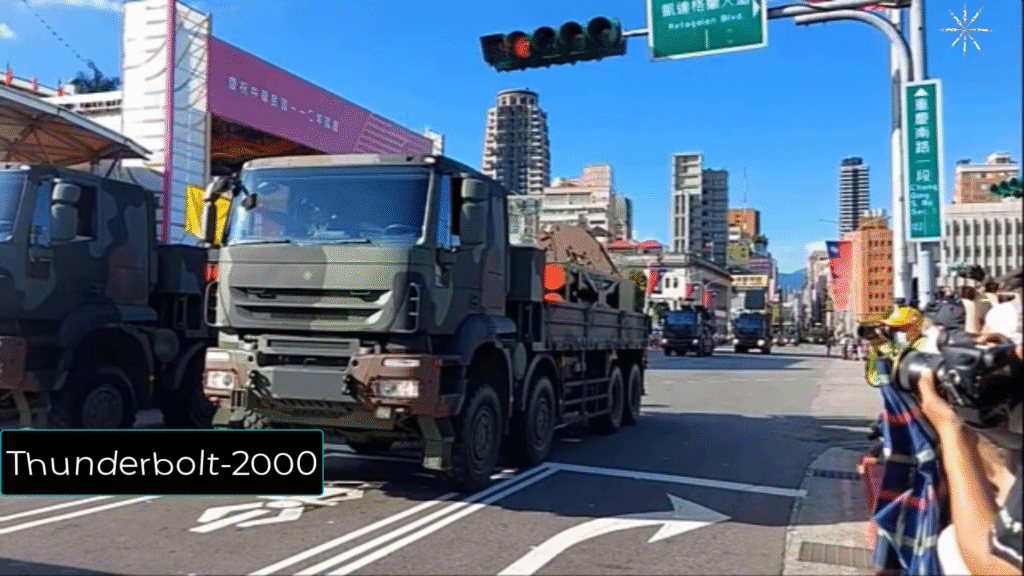
Technical Innovations and Upgrades
Over the years, Taiwan has continued to refine the Thunderbolt-2000 system. Modern variants feature improved targeting systems, enhanced communications, and better integration with Taiwan’s broader command-and-control networks.
Advanced fire-control systems enable faster targeting and improved accuracy. These improvements ensure that the Thunderbolt-2000 remains a modern and effective component of Taiwan’s military forces. Furthermore, upgrades have focused on increasing survivability by enhancing mobility and incorporating countermeasure systems.
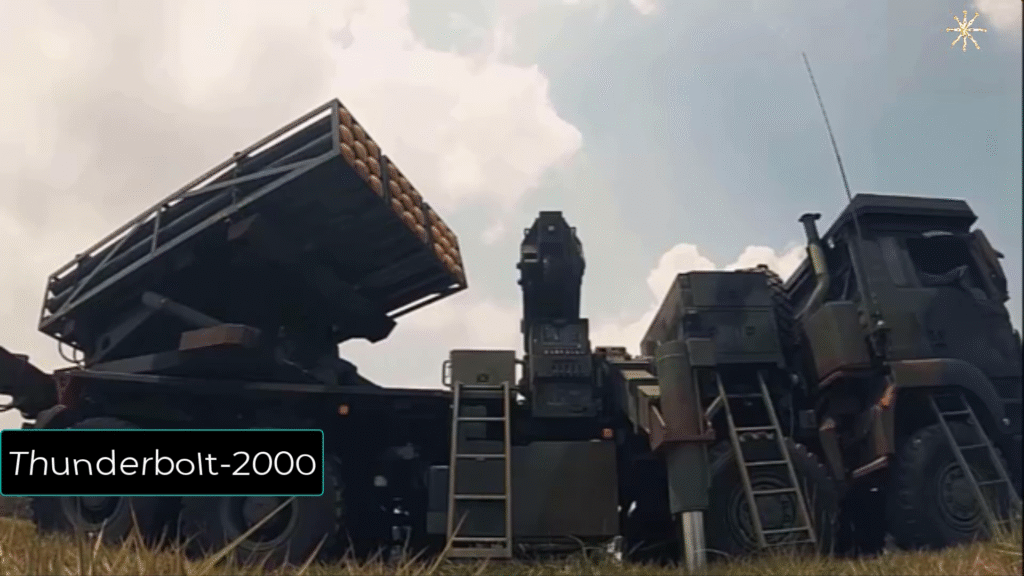
Deployment and Tactical Use of Thunderbolt-2000
The Thunderbolt-2000’s deployment typically involves rapid movement to a forward area, launching a barrage of rockets, and then quickly relocating to avoid counter-battery fire. Because the system is highly mobile, it can be repositioned rapidly to exploit weaknesses in enemy lines.
In a real-world conflict scenario, the system would work closely with Taiwan’s radar and surveillance assets. These assets provide real-time information on enemy movements, allowing the Thunderbolt-2000 to strike targets with precision. In addition, Taiwan’s defensive doctrine emphasizes quick, coordinated strikes to delay and disrupt any invasion force.
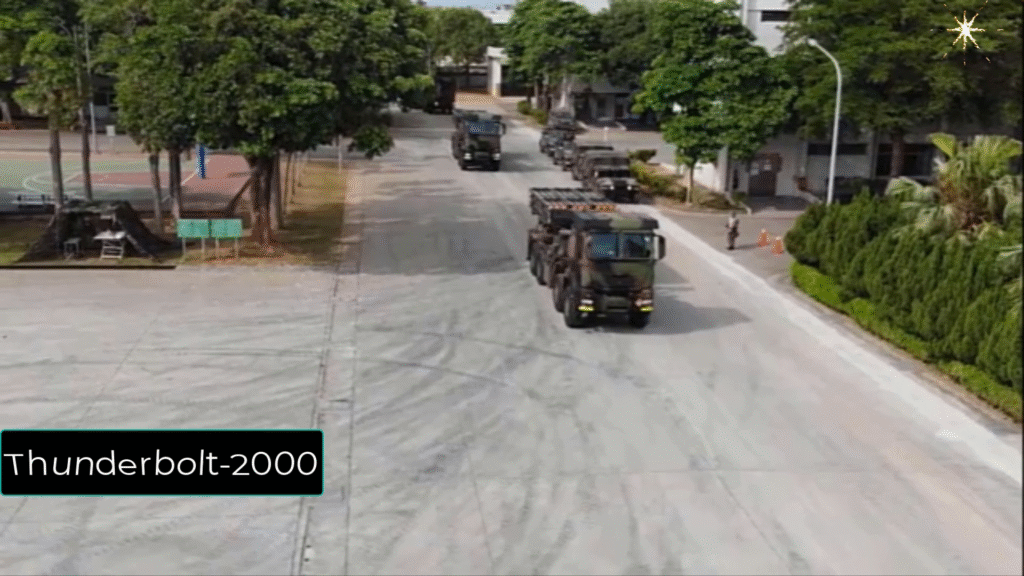
International Perception and Impact
Internationally, the Thunderbolt-2000 has drawn attention as a symbol of Taiwan’s technological ingenuity and determination to defend itself. Its development highlights Taiwan’s commitment to investing in indigenous defense systems, ensuring that the nation can maintain operational independence even in the face of external pressures.
In the broader geopolitical context, the Thunderbolt-2000 demonstrates how smaller nations can leverage advanced technology to offset numerical disadvantages. This system’s existence reinforces Taiwan’s position in the region and contributes to stability by raising the costs of any potential aggression.
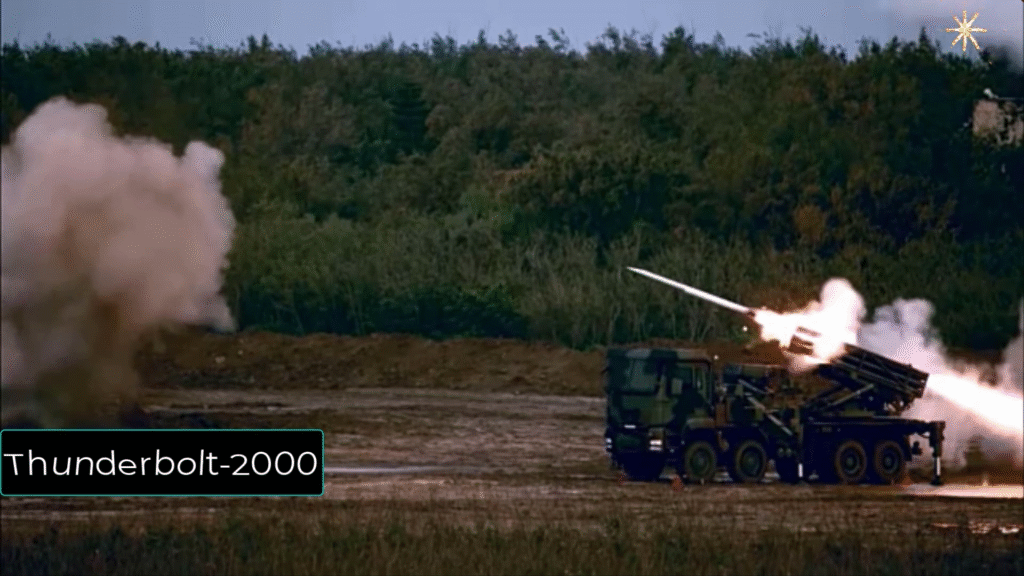
Frequently Asked Questions
Q: What exactly is the Thunderbolt-2000?
A: It’s a multiple launch rocket system developed by Taiwan, designed to deliver rapid, heavy firepower over long ranges.
Q: Who developed this advanced system?
A: The Chungshan Institute of Science and Technology (CSIST) developed the Thunderbolt-2000.
Q: When did it enter service?
A: It entered service around 2002 and has been upgraded over time.
Q: What are its main rocket types and their ranges?
A: The system can launch 117 mm rockets (15-20 km range), 180 mm rockets (35-45 km range), and 230 mm rockets (45-60 km range).
Q: Why was it developed?
A: It was developed to deter and counter potential threats from China, offering mobility and powerful strikes against enemy forces.
Q: How many crew members operate it?
A: Typically, a crew of 4-5 personnel operates the Thunderbolt-2000.
Q: How does it fit into Taiwan’s overall defense strategy?
A: It provides rapid-response firepower and enhances Taiwan’s deterrence capabilities against large-scale amphibious or missile-based attacks.
Q: Is the Thunderbolt-2000 still being modernized?
A: Yes, Taiwan continues to upgrade its targeting systems, communications, and survivability features to keep the Thunderbolt-2000 relevant and effective.
Conclusion
In summary, the Thunderbolt-2000 represents a key pillar in Taiwan’s defense capabilities. Its mobility, firepower, and versatility allow Taiwan to adapt to evolving threats while maintaining a credible deterrent. As Taiwan continues to modernize its military, the Thunderbolt-2000 will remain a symbol of resilience and innovation, showcasing Taiwan’s commitment to safeguarding its sovereignty and security.
